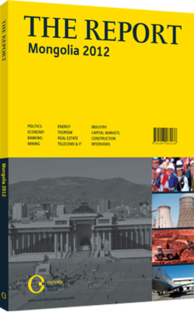Modern times: The cashmere segment is set to introduce new solutions to old problems
With the capacity to produce 30% of global supply, Mongolia is the world’s second-largest producer of cashmere. Cashmere is perhaps Mongolia’s most important industry, and efforts are now under way to modernise, market and organise it. Cashmere sales average about $180m, according to the Mongol Cashmere Association (MCA). The industry is of major importance, as around a third of the labour force of 1.1m work in agriculture, primarily as herders of horses, sheep, cattle, yak and goats – the source of cashmere. As a measure of the industry’s importance, the Ministry of Finance said in September 2011 that it would sell MNT300bn ($234m) in bonds, which would be earmarked to support wool and cashmere processors and exporters, as well as herders. If all the funds generated from the sale of the bonds are spent, it is estimated that another 1800 jobs will be created in the cashmere industry.
PROCESSING: As of 2011 about 20-25% of production is processed (including washing the raw material and spinning it into yarn) before export, C. Tumenbayar, the president of the Mongolian Cashmere Corporation, told OBG, although there are plans to raise this to 60%. According to the MCA, profits would rise to $480m-520m if the country eliminated raw exports and did the basic processing itself. The industry-wide goal for 2012 is to turn at least 30% of raw cashmere into yarn. Most exports currently go to Europe.
Processing and exporting firms typically buy raw material from herders at MNT35,000-72,000 ($27-56) per kg. Prices have been steady for about five years. There are around 30 firms involved in washing and 40 factories turning yarn into goods, as well as three vertically integrated producers: Altai Cashmere, Goyo Cashmere and the Gobi Joint Stock Company.
Altai has the capacity to produce some 170,000 items per year, although it intends to expand this to 700,000 in the future. The firm has 30-plus local stores and aims to grow by focusing on exports markets, particularly Germany, Italy and Japan. A new joint venture with a Japanese partner is expected to help with the latter.
Goyo has a capacity of around 300,000 pieces, increasing to 500,000 in 2013, and is focusing on the high fashion/luxury segment. The firm has a market share of about 30% and sales are nearly evenly divided between the local and export markets. It currently has an Italian partner distributing in Italy and Germany, and is targeting Russia via a new subsidiary there.
Gobi, the largest local producer with a market share of around 47%, is a part of the Tavan Bogd Group and exports mainly to Europe and Asia.
WEATHER & DESERTIFICATION: Mongolia’s dzuds, or tough winters, are often deadly for animals, and have been common in recent years. Another challenge is the rising number of goats, which is linked to increasing desertification. Since the size of animal herds is no longer subject to state control, herders have been raising more goats to sell more cashmere. Land overgrazed by goat populations can often succumb to desert due to a lack of plant life. As a result, animals are not getting enough food to fatten up before winter, making them more susceptible to harsh conditions.
For executives like Tumenbayar, the major problem is herders. “Animal husbandry was strict and well monitored 20 years ago,” he said. “Now people are after quantity, not quality.” Nomads used to relocate three or four times a year instead of the current average of two, which also means there is less pastureland rotation “Land management is a better plan,” he said.
However, he noted, climate change looks likely to be the largest reason for desertification – not more goats or poor land management. “When we looked at the research, we found that 85% of the reason for desertification was global warming.”
Another solution to the problem is an index-based insurance plan against winter deaths (see Insurance chapter). The insurance industry believes herders have increased the size of their flocks as a form of homegrown insurance against losses. If they have the option of buying a microinsurance policy against it instead, they may be willing to begin to return to smaller herd sizes.
You have reached the limit of premium articles you can view for free.
Choose from the options below to purchase print or digital editions of our Reports. You can also purchase a website subscription giving you unlimited access to all of our Reports online for 12 months.
If you have already purchased this Report or have a website subscription, please login to continue.

